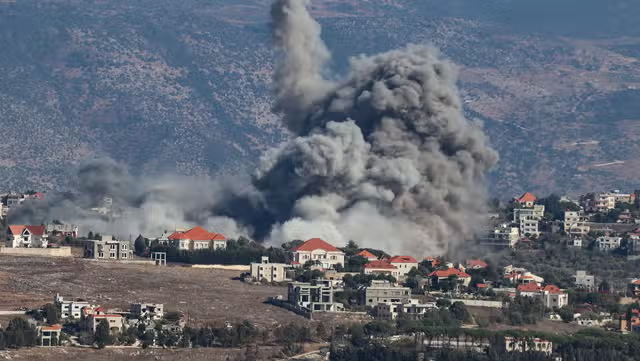Your support helps us to tell the story
Support NowAs your White House correspondent, I ask the tough questions and seek the answers that matter.
Your support enables me to be in the room, pressing for transparency and accountability. Without your contributions, we wouldn't have the resources to challenge those in power.
Your donation makes it possible for us to keep doing this important work, keeping you informed every step of the way to the November election

Andrew Feinberg
White House Correspondent
At least four people died and dozens of flights and trains were cancelled after heavy rainfall flooded the streets of Mumbai, prompting a red alert.
Some parts of India’s financial hub of 21 million people received over 250mm of rain, nearly five times London’s monthly rainfall,in just six hours on Wednesday. It was the highest single-day rainfall in September since 2020, according to the Indian Meteorological Department.
At least four people died in rain-related incidents. A woman drowned in an open drain and two labourers were killed by lightning in Kalyan area. Another woman reportedly drowned near a waterfall in Khopoli town, about 80km from Mumbai city.
Operations at Mumbai’s Chhatrapati Shivaji Maharaj international airport were severely affected, with at least 36 flights cancelled, causing delays and disruptions for thousands of travellers.
Airlines like SpiceJet, IndiGo and Vistara said they were diverting several flights due to the adverse weather.
The local train services, which serve over 7 million people daily, were heavily affected, particularly between Kurla and Thane, where waterlogging stranded passengers.
A large crowd of passengers was seen gathered at the Chhatrapati Shivaji Terminal Station, the city’s largest train station, amid confusion caused by cancellations and delays. The terminal is a vital traffic hub connecting local trains to the intercity and interstate rail network.
A red alert remained in place for Mumbai and neighbouring districts, with authorities asking residents to stay indoors and avoid non-essential travel.
Roads across the city, including in Andheri, Chembur and Vikhroli, were inundated. Schools and colleges were closed as a precautionary measure.
The weather department has forecast more heavy rainfall in the coming days in Mumbai as well as the nearby cities of Pune, Thane and Palghar.
Heavy rainfall often grinds Mumabi to a halt as the coastal city’s drainage system struggles to cope with the sheer volume of water. Mumbai is one of the rainiest urban areas in the world receiving 2,200mm of rain on average between June to September, three times London’s annual rainfall.
Several areas of the city are also at or below sea level, making it vulnerable to high tides, particularly during the monsoon season.
Natural defences like the mangroves once help absorb excess water, but these crucial ecosystems have been under increasing pressure due to the relentless expansion of urban development. As structures encroach on these areas, the risk of flooding during heavy rains grows, putting millions of residents at risk.
Disclaimer: The copyright of this article belongs to the original author. Reposting this article is solely for the purpose of information dissemination and does not constitute any investment advice. If there is any infringement, please contact us immediately. We will make corrections or deletions as necessary. Thank you.



